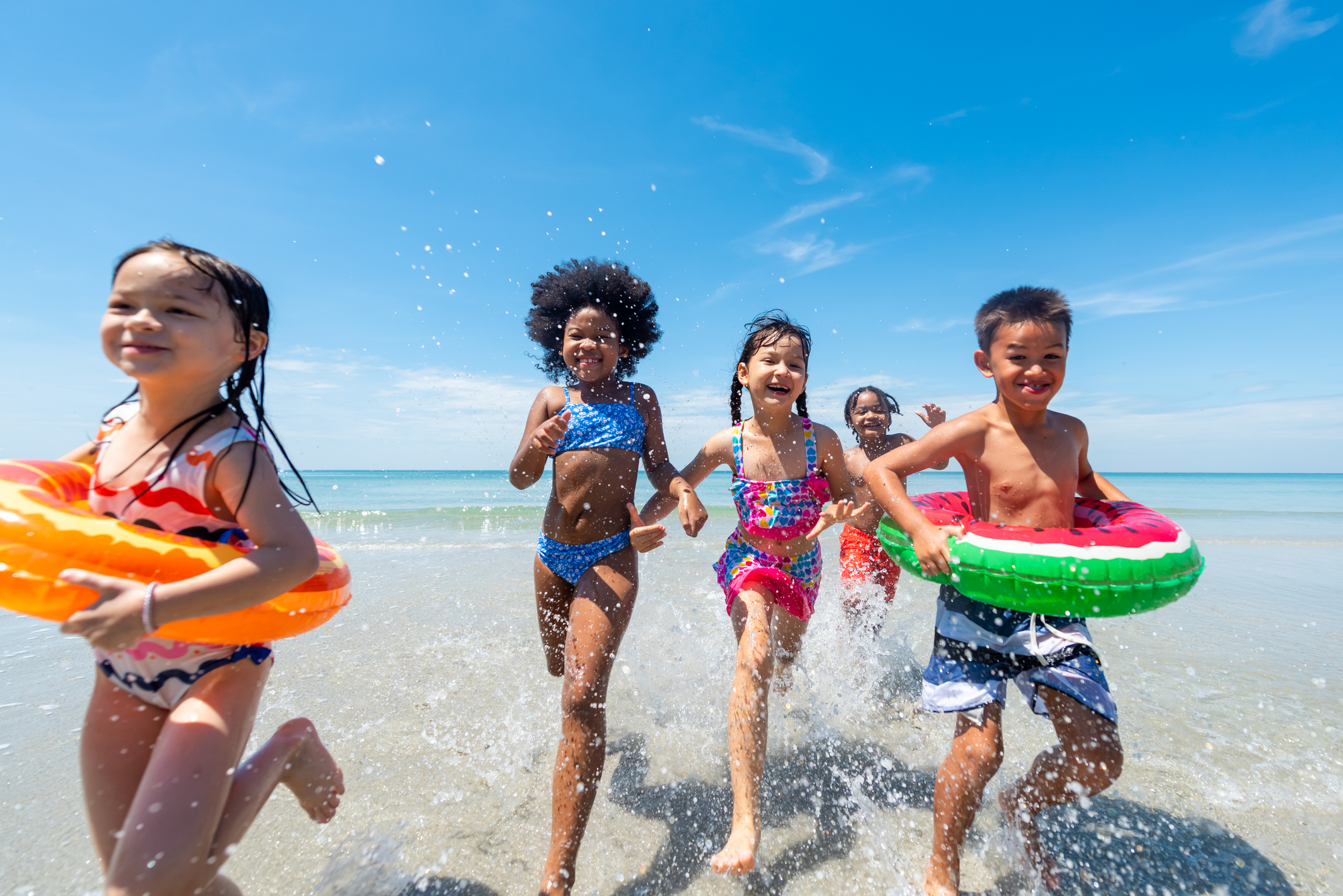
Your checklist for safe summertime fun
It’s hard to beat the days of summer when it comes to fun. From cooling off in sparkling water to enjoying a sunny afternoon in a park, the warmer weather and extra daylight hours make for plenty of good times. But summer is also a time when you need to take a few precautions while having all that fun. Some activities this time of year can pose some serious health risks.
Safety: check it on your list
To help you and your family enjoy a safer, healthier summer, we’ve put together some of the best safety reminders and tips in the form of a handy checklist. These pointers are based on information from national medical experts.
Be wise around water
Summer just isn’t the same without a way to cool off. And heading to a beach, a pool or a lake is often the preferred way to do that. You have to up your safety game if you or your family are going to be around water. For starters, be sure to:
- Keep a close eye on the kids. Designate an adult in your group to supervise them at all times. And whoever is keeping watch needs to avoid distractions like texting or reading.
- Practice touch supervision. Stay within an arm’s length of younger kids in water. Young children can drown quickly, and you might not hear them struggle.
- Always swim with a buddy, no matter how well you swim.
- Make sure everyone wears a life jacket when in a boat.
- Look for swimming areas that have a lifeguard on duty.
- Avoid alcohol. Drinking and swimming or boating don’t mix.
Save your skin
Too much unprotected exposure to the sun’s ultraviolet rays can cause sunburns, of course. It also contributes to early wrinkling and even causes skin cancer.
So whenever you head outside, be sure to:
- Apply sunscreen to all exposed skin. Use a broad-spectrum, water-resistant product with a sun protection factor of at least 30; reapply every two hours.
- Don’t rely on sunscreen alone to protect your skin. Whenever possible, seek shade under a tree or other shelter, especially between 10 a.m. and 2 p.m., when the skin-damaging UV rays are strongest. Or bring your own shade by packing a beach umbrella.
- Protect your skin and eyes with a hat, sunglasses, and (whenever possible) light-weight long pants and a long-sleeved shirt.
Don’t let the bugs bother you
Insects aren’t just annoying. Some can actually make you sick. For instance, mosquitoes may carry West Nile virus, and some ticks can spread Lyme disease or Rocky Mountain spotted fever. Bees and other stinging insects can cause allergic reactions.
To help give these vexing and potentially dangerous pests the slip:
- Rid your yard of empty flower pots and other containers that hold standing water. Mosquitoes use these places to lay their eggs.
- When mosquitoes are out, wear long-sleeved shirts and long pants.
- Use an insect repellent that is registered with the Environmental Protection Agency (check the label) to thwart mosquitoes and ticks. You can use a product that contains permethrin to treat clothing and camping gear. Bug sprays are safe when used as directed. So follow the instructions on any insecticide product label carefully.
- When hiking, stay in the center of the trail, where you’re less likely to get a tick on your clothes or your skin. Be careful to avoid brushing up against grasses and other plants alongside the path. And steer clear of wooded areas.
- Check for ticks after you’ve been outside. If you find one, remove it carefully with tweezers. Check your pets, backpacks, clothes and gear for ticks too.
- Take a shower after you’ve been in places where ticks live. Showering may help remove any ticks you didn’t find.
- If you get a bee sting, ice wrapped in a towel will ease swelling. Seek immediate medical help for severe allergic reactions to stings. Symptoms include trouble breathing and swelling of the face, mouth or tongue.
- Don’t forget to carry an EpiPen if anyone in your family is allergic to bee stings.
Go easy on your green thumb
Gardening is a great summer activity. It lets you grow your own nutritious food or beautiful flowers. But injuries are one of gardening’s potential hazards. For example, activities like digging or raking can cause blisters and muscle injuries if you’re not used to doing them and you do them for too long.
To help keep your gardening activities safe:
- Take breaks every 15 minutes, and vary your gardening tasks.
- Use the right tools. Injuries are likelier to occur when tools are used for tasks they’re not meant for. For instance, a chair is not a ladder for trimming branches. A garden trowel makes a poor hand rake.
- Get some gloves. This simple tip helps protect against cuts and scrapes that could become infected, possibly with tetanus bacteria.
Speaking of tetanus, make sure your tetanus vaccinations are up-to-date. You may need a booster shot if it’s been 10 years since you’ve had a tetanus vaccine.
- When using power garden or lawn tools—such as tillers, mowers or trimmers—carefully read and follow all safety instructions for the equipment, including when it comes to wearing eye or hearing protection and other necessary safety gear.
Sources: American Academy of Dermatology; American College of Emergency Physicians; American Society for Surgery of the Hand; Centers for Disease Control and Prevention


